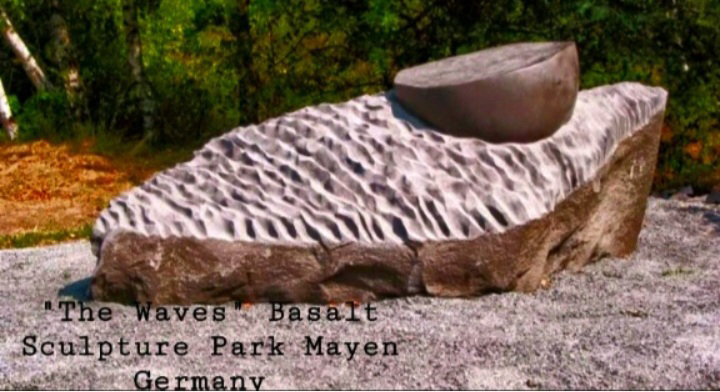Art, in all its diverse forms, has a unique way of conveying emotions, stories, and perspectives. While paintings and sculptures may appear to be two separate worlds within the realm of art, there is a unifying element that binds them together – light. One artist who has skillfully harnessed the power of light in his sculptures is Anastasios Paraskevopoulos, a Greek artist whose work transcends the conventional boundaries of this art form.

In the world of art, there is often a distinct line drawn between paintings and sculptures. Paintings, by their nature, possess an innate luminosity stemming from the colors and brushstrokes chosen by the artist. However, sculptures rely on external light sources to bring them to life, a fundamental difference that has intrigued Paraskevopoulos throughout his career.

The artist posits that there are two essential types of light that sculptors must consider when crafting their pieces: the incoming beams of light and the light source that directly illuminates the sculpture itself. This understanding forms the cornerstone of Paraskevopoulos’s work, as he manipulates these two forms of light to create sculptures that are not just static pieces of art but living, breathing expressions of his artistic vision.
One of his sculptures, which was exhibited in the Florence Art Biennale, is accompanied by a review text written by the very significant Lady of Swiss Art, Mrs. Dr. Kerstin Bitar, the Scientific Director of the Rosengart Collection-Museum in Lucerne, Switzerland. Mrs. Dr. Kerstin Bitar is also a member of the team of the Robert Kennedy Foundation for Human Rights in Zurich, Switzerland, and she serves as the Vice President of the Wilhelm Hausenstein Art Historian Foundation in the city of Hornberg, Germany.
To comprehend the significance of this, let’s delve into the concept of chiaroscuro, a term often associated with painting but profoundly relevant in the world of sculpture as well. Chiaroscuro refers to the contrast between light and shadow, a technique used to create depth, volume, and a sense of three-dimensionality in both paintings and sculptures.
Paraskevopoulos highlights the role of chiaroscuro in his work by stressing the interplay between the incoming beams of light and the shadows cast by the sculpture’s volume. In doing so, he emphasizes the pivotal role that light plays in defining the formal concept of a sculpture. Essentially, light becomes a sculptor’s tool, an instrument with the power to shape, mold, and breathe life into the work of art.
The significance of light extends beyond mere aesthetics; it influences the very essence and character of a sculpture. Paraskevopoulos’s sculptures are not stagnant, lifeless forms. Instead, they are dynamic, ever-changing creations that come alive through the dance of light and shadow upon their surfaces.
Depending on the quality and direction of the light, a sculpture may appear more or less static, and its movements may range from subtle to dramatic. It is the manipulation of light that breathes life into these inanimate forms, making them dynamic and responsive to their environment.
Moreover, light can heighten the dramatic character of a sculpture. The viewpoint from which one observes a sculpture, along with the contrast between light and shadow, can accentuate its emotional impact. It is as if Paraskevopoulos’s sculptures are actors on a stage, and light is the director, guiding their performance and evoking different emotions from the audience.

As one delves into Paraskevopoulos’s body of work, it becomes evident that fine transformations occur due to the nuanced interplay of light. The sculptor’s ability to manipulate light within his pieces often results in elements that resemble paintings in their vivid, evocative qualities. This amalgamation of sculptural and pictorial elements showcases his mastery in bridging the gap between these two art forms.
In the realm of contemporary sculpture, where artists are often pushing the boundaries and experimenting with new materials and techniques, Paraskevopoulos stands out for his unwavering focus on light as a central and transformative element in his work. His commitment to understanding the intricate relationship between sculpture and light is not only a testament to his artistic brilliance but also an invitation for viewers to engage with his pieces on a deeper level.
Paraskevopoulos’s sculptures are an exploration of the dynamic nature of art itself. They challenge the conventional notion of sculptures as static, unchanging objects and instead invite us to witness the power of light in shaping and reshaping artistic expression. His work is a testament to the fact that art is not confined to a single medium or technique but can transcend boundaries and captivate the human spirit through the interplay of elements.
In a world where art continues to evolve and redefine itself, Anastasios Paraskevopoulos’s work serves as a reminder of the enduring significance of light in the world of sculpture. His sculptures are not just carved stone or molded metal; they are living, breathing entities that respond to the ever-changing conditions of light. In doing so, they invite us to see the world of art with fresh eyes and to appreciate the transformative power of light in shaping our perceptions and emotions.
